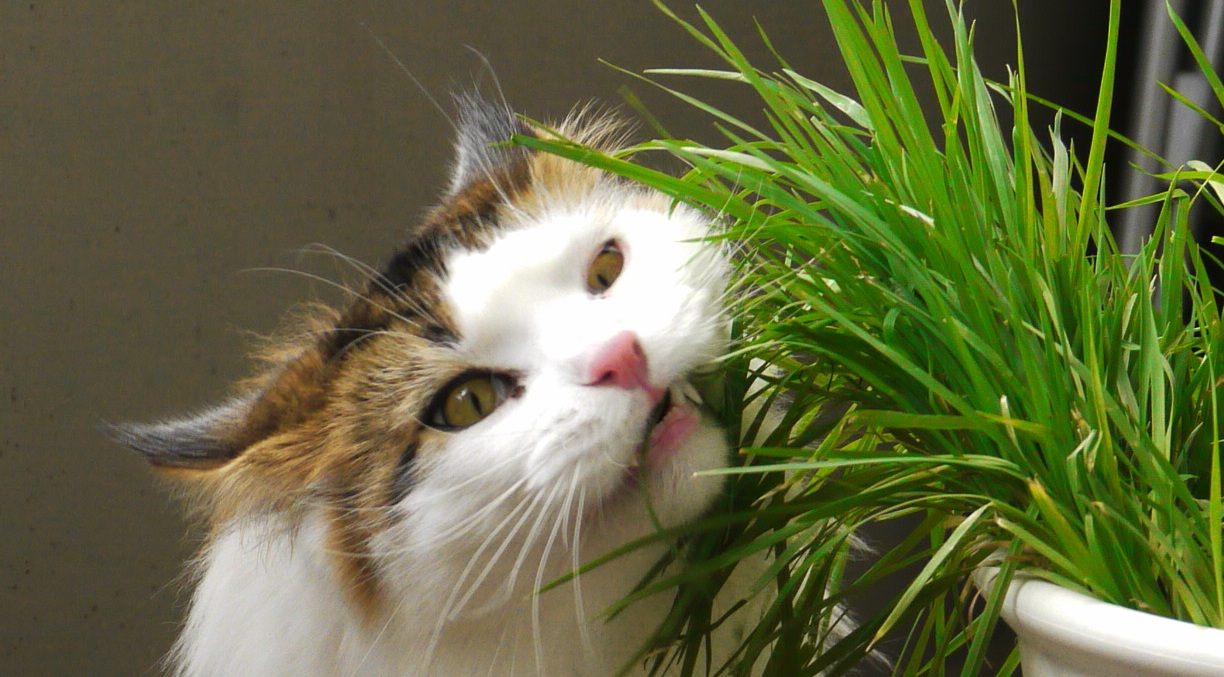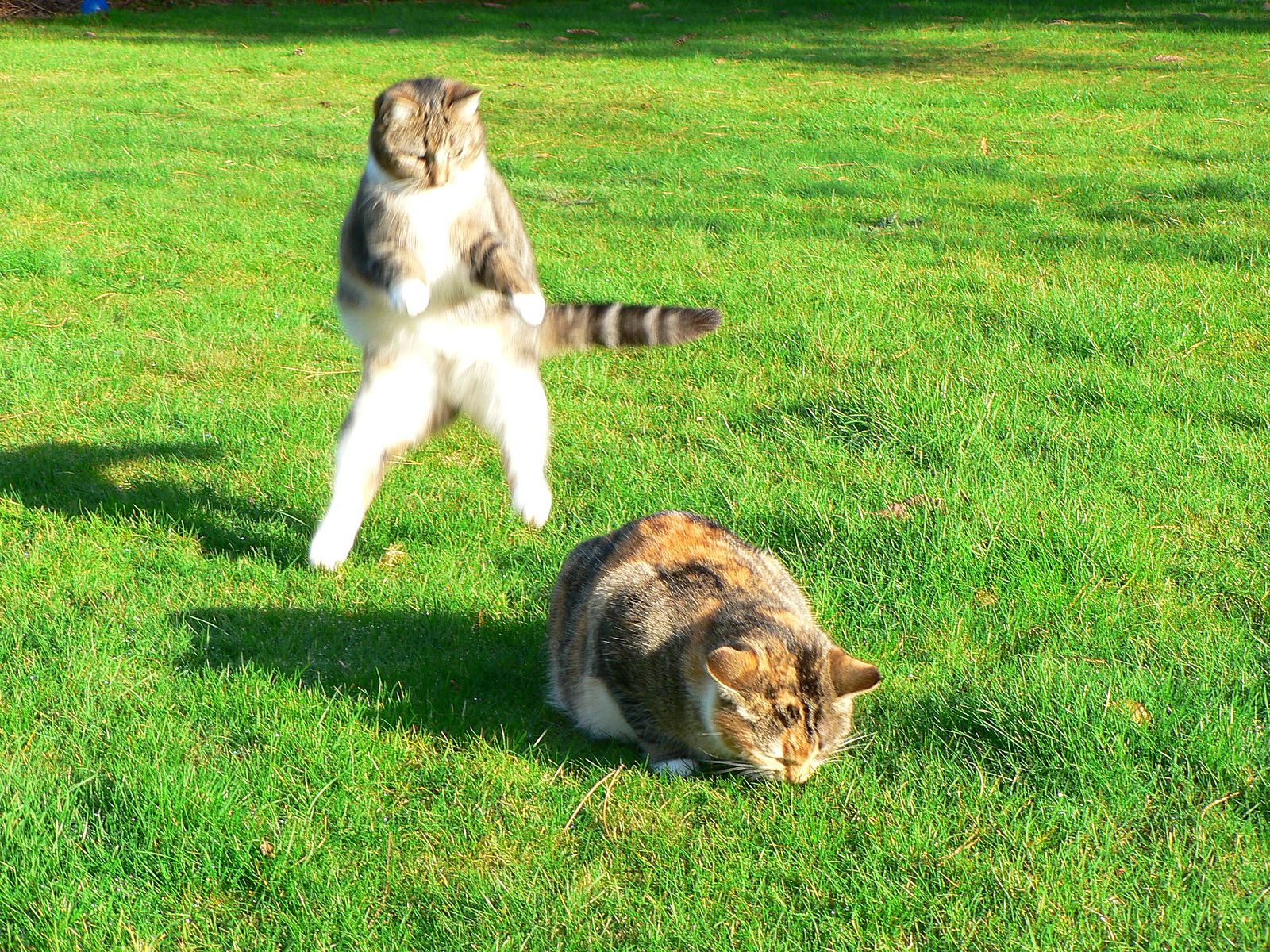Cities Pass Cat Curfews; Cats Keep Doing Whatever They Want
 The neighborhood menace chews on some wildlife. (Photo: LisaSympson/WikiCommons CC BY-SA 2.0)
The neighborhood menace chews on some wildlife. (Photo: LisaSympson/WikiCommons CC BY-SA 2.0)
Curfews are usually reserved for unruly teens and convicted felons. But increasingly, governments are trying to apply them to an even more slippery target—cats.
Earlier today, felines were once again put on notice, as Australia announced its intention to encourage a curfew that would keep cats off the streets and, more importantly, out of the woods.
Australian Threatened Species Commissioner Gregory Andrews hopes to slowly impose a 24-hour curfew for roaming-prone house cats. Although the federal government can’t actually mandate this, Andrews plans to work with local and state branches and educate people until it’s an accepted practice, saying “it’s a journey that Australia has to go on.”
The Australian federal government is merely the latest in a series of of authorities who have tried to protect other species by slapping cats with curfews. Some Australian towns are ahead of the game—cats living in certain Sydney suburbs can’t show their paws out of doors from dusk until dawn, for fear they’ll go tearing through nearby wildlife preserves (they also must wear two bells at all times). And since the Yarra Ranges community council imposed a wall-to-wall curfew last year, cats seen off their property are subject to formal complaints, trapping, and, worst-case scenario, a new, fully caged life in the local pound.
 The northern quoll, cat victim. (Photo: Wildlife Explorer/Picasa CC BY 3.0)
The northern quoll, cat victim. (Photo: Wildlife Explorer/Picasa CC BY 3.0)
The impetus? Australia is full of smaller, rarer mammals that make great cat snacks. Zoologist Chris Johnson writes that “cats and foxes can account for practically all of the [Australian] mammal extinctions of the last 200 years,” starting when felines were brought over to the continent by European settlers.
Cats killed the lesser bilby and the Darling Downs hopping mouse. They’ve also interrupted reintroductions, like that of the rufous hare-wallaby, and continue to menace dwindling species like the northern quoll and ringtailed possum. Minister of the Environment Ted Hunt recently called feral cats ”tsunamis of violence and death for Australia’s native species.” Australia’s Feral Cat Plan was just released, and it aims to exterminate two million strays over the next five years.
Domestic cats are less responsible for the slaughter than their feral counterparts. But Andrews hopes keeping them indoors will prevent them from supplementing their canned food, mating with their wild brethren, and killing for sport.
 Cats enjoy a nighttime snack at a cat cafe in Japan. (Photo: Takashi Hososhima/Flickr CC BY-SA 2.0)
Cats enjoy a nighttime snack at a cat cafe in Japan. (Photo: Takashi Hososhima/Flickr CC BY-SA 2.0)
In recent years, other countries have gotten in on the cat curfew act. Thanks to a 2012 ordinance, cats and dogs can now only strut down Las Vegas’s Sunset Strip between the hours of 5 a.m. and noon. (It passed unanimously, despite an Elvis impersonator’s pleas to be able to keep performing at all hours with his gold-jumpsuited dog.) Nominally, the rule is meant to keep animals from overheating, but some think its real goal is to cull strays and keep out the city’s pet-owning homeless population.
Japan jumped on the bandwagon in 2012, when a revision to their animal protection code banned the “public display of cats and dogs” after 8 p.m., Though the authorities meant to target late-night pet shops, the ordinance has taken a toll on the popular cat cafes, which cater to stressed-out after-work businessmen.
“Everybody knows cats are really happy in the evening, with their big, cute eyes,” one cat cafe owner told Reuters. “So I just can’t understand why the people at the top are ignoring this.”
 A cat attempts to forage indoors. (Photo: The27thmaine/WikiCommons Public Domain)
A cat attempts to forage indoors. (Photo: The27thmaine/WikiCommons Public Domain)
Other places have even bigger plans. A New Zealand group called Cats To Go, led by well-known economist Gareth Morgan, wants to ban all felines from the island in order to reduce noise and protect native birds. The group provides opportunities to report nearby strays, education in the form of pages like “your cat is not innocent,” and encouragement for pet owners to “make this cat your last.” Other New Zealanders have proposed a less extreme three strike system.
The highest-profile cat curfew proponent in the United States is probably Jonathan Franzen. The bird-obsessed bestselling author uses his books, his nonfiction, and his public pulpit to advocate for keeping cats indoors. “I would stress that I personally am not anti-cat,” Franzen told The Daily Beast in 2011. “But with songbird populations falling all across North America, I do think it’s time for a movement.”
Of course, cat curfews are difficult to enforce. As Sydney-based veterinarian Dr. Anne Fawcett pointed out on her blog, Small Animal Talk, last year, “animals have NO IDEA of the rules.” And even if they did understand human laws, cats of all creatures would probably have no qualms breaking them.
Good luck implementing this, Australia!
 Cats enjoying their potentially numbered outdoor days. (Photo: Worak/WikiCommons CC BY 2.0)
Cats enjoying their potentially numbered outdoor days. (Photo: Worak/WikiCommons CC BY 2.0)

















Follow us on Twitter to get the latest on the world's hidden wonders.
Like us on Facebook to get the latest on the world's hidden wonders.
Follow us on Twitter Like us on Facebook